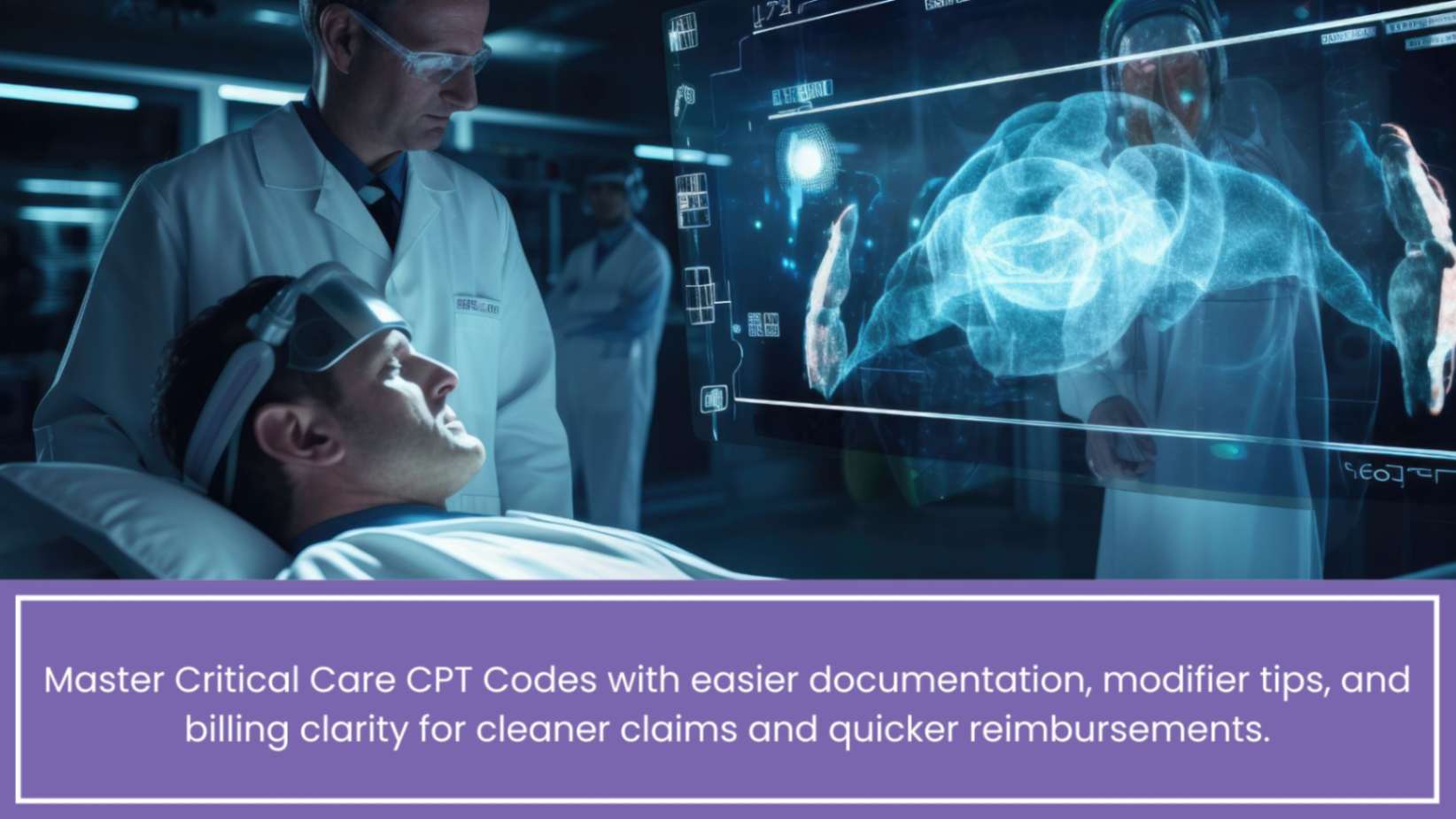ICD vs CPT Codes in Medical Billing: Key Differences
ICD vs CPT Codes in Medical Billing: Key Differences that shape accurate claims and payments. ICD codes define the patient’s diagnosis, while CPT codes detail the provider’s procedures. Both must align perfectly for smooth reimbursements; mismatches often lead to costly denials or delays. In this blog, we break down how these codes work, the risks of coding errors, and emerging innovations like AI-driven tools and ICD-11 updates. Discover how to simplify coding and ensure precision. With Practolytics, medical coding becomes faster, safer, and more reliable—helping your practice earn more with less effort.
Table of Contents
ICD vs. CPT Codes: What’s the Difference in Medical Billing?
Medical billing is like the money-maker for health businesses. To get paid right and quickly, folks in healthcare must know their codes. There are two main types in the U.S. that everyone uses: ICD and CPT. They’re like a secret language that makes sure the doctor gets paid for fixing you up.
We’re here to explain it most simply. By the time you finish reading, you’ll get why these codes are so important for your health business and how they can keep the money flowing. We’ll even show you how Practolytics makes dealing with these codes a walk in the park.
Let’s get started and make sure you know what makes the cash register at your clinic ring.
What Are ICD Codes?
The acronym for the system that underpins our healthcare sector is ICD. Since it serves as a sort of universal language for illnesses, everyone is aware of the patients’ conditions. Imagine a patient who has been diagnosed with acid reflux after presenting to the doctor with chest pain. “Ah, that’s a K21.9,” the doctor says. Though it is highly specialized rather than secret, it is comparable to a secret code.
Now, who is in charge of these codes? In charge is the World Health Organization (WHO). Because ICD codes are used to keep everything in order, everyone abides by the same rules. Here in the United States, the ICD-10-CM is utilized. Because it is tailored to our specific medical needs, the “CM” is like a limited edition for us. It’s like having a suit made to order.
Consider over 70,000 of these codes! People need help for a variety of reasons. The medical narrative associated with each code is crucial in identifying the necessary service. It’s like a comprehensive auto repair bill, but for your health. It’s straightforward, but it keeps things on track and clear, which is important in business, especially in the healthcare industry.
What Are CPT Codes?
CPT stands for Current Procedural Terminology. It works like a shorthand language for doctors and insurers. What a doctor did for a patient is described by these codes.
Imagine a doctor using a tiny camera to check your internal organs for acid reflux. Since that activity received the code 43235, everyone is aware of what transpired. If you are only receiving a routine checkup, the code may be 99213.
Because they are created by the American Medical Association (AMA), which is essentially the medical industry’s boss of bosses, these codes are significant. They have a significant number of these codes—more than 10,000! To keep things interesting, they update them yearly rather than simply sitting there.
Why are we concerned? Because insurance companies use these codes to determine how much to pay for your care. It keeps everything orderly and equitable for all, much like a price tag for medical services.
How ICD and CPT Codes Work Together
Think of ICD codes as describing the customer’s complaint, like knee pain. CPT codes, on the other hand, are what you, the doctor, do to fix it, like giving a steroid shot. When you use them right together, it’s like telling a story that makes sense for the insurance folks to pay up.
Why get these codes right? Well, mess up and you’re looking at
- Claims thrown out—that’s money you won’t see.
- Money takes forever to arrive—not good for business.
- You might not be following the rules, which can lead to trouble.
- Less money coming in—nobody wants that.
Back in 2024, a big report from CMS showed that over 30% of claims got denied because of medical coding mistakes, mostly because the ICD and CPT codes weren’t playing nice together. Now, with something called value-based care getting popular, insurers are really interested in whether the treatment was needed. So, ICD codes are your best buddy here, showing that you’re not just guessing.
Therefore, you, the person receiving treatment, and the bank account all benefit when you keep things straightforward and correct.
Industry Trends and Updates
AI-Powered Coding Solutions:
Today, many health centers use smart tools with AI to aid in coding. These clever tools cut down on mistakes made by people and make the billing process go faster.
Remote Coding Experts:
As the world goes digital, clinics are hiring more coding professionals who work from home. This is good for the wallet and makes things run smoother.
Compliance is Key:
Because of frequent checks, following the coding rules is super important. It’s especially critical for those who work with Medicare and Medicaid.
ICD-11 on the Horizon:
A new set of coding rules called ICD-11 is already in use around the world. The US will switch soon, bringing more detailed ways to describe patient conditions.
These changes keep the medical billing world on its toes and help ensure everyone is playing by the book. They also let doctors and offices save time and money, which is a big deal in the business of healthcare.
Pros & Cons of ICD and CPT Coding
|
Aspect |
ICD Codes |
CPT Codes |
|---|---|---|
|
Purpose |
Show the diagnosis |
Show the service or treatment |
|
Created By |
World Health Organization (WHO) |
American Medical Association (AMA) |
|
Example Code |
E11.9 – Type 2 diabetes |
83036 – Haemoglobin A1C test |
|
Updated |
Annually |
Annually |
|
Needed for |
Justifying medical necessity |
Claiming provider payment |
Common Coding Difficulties
- Using old codes
- Mismatch of codes for diagnosis and procedures
- Coding more or less than needed
- Insufficient training for coders
- Connecting the wrong diagnosis with procedures
These can cause payment problems, audits, and legal woes.
How Practolytics Assists with Medical Coding
Managing a large number of codes can be tough. That’s where Practolytics comes in to help.
Here’s how Practolytics benefits your healthcare place:
- We have coders who know their stuff with ICD, CPT, and HCPCS codes.
- We make sure your claims are right so you get paid faster.
- We use modern tech for quick and clean claims.
- We keep patient info safe with HIPAA rules.
- We have virtual helpers for billing, coding, and insurance stuff.
Practolytics is the right fit for small offices and big ones with many locations. We keep coding easily, quickly, and reliably.
Final Thoughts: Know Your Codes, Grow Your Practice
ICD and CPT codes are like the ABCs for healthcare money stuff. If you follow them correctly, your clinic will function smoothly, generate more revenue, and avoid problems. If you do them incorrectly, you risk getting into trouble and losing time. It’s like hitting a big financial speed bump.
It’s time to bring in the experts if you’re still approaching coding like a puzzle or if you’re unsure that you’re following the rules. Practolytics is like your coding superhero, making sure all your bills are perfect so you get paid and don’t worry about breaking any laws.
Do You Want to Earn More Money While Coding Less?
We’ve got a team of virtual medical billing helpers and code wizards ready to make your billing hassle-free. They’re like a trusty sidekick who makes sure everything is just right.
Let’s chat about growing your clinic.
Go to practolytics.com to learn more or set up a free chat without any strings attached.
ALSO READ – Simplifying Revenue Management: How Medical Billing Services Empower Small Practices






